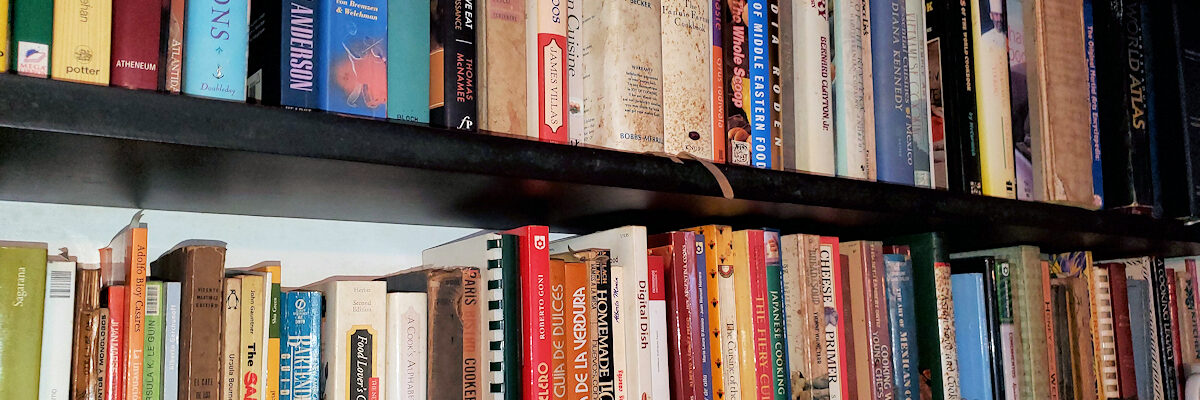It’s been awhile since I did a round up of food and wine related books that I’ve read. Last September to be exact. So what have I been reading since then in this genre? In the order I read them.
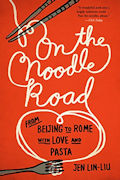 On the Noodle Road: From Beijing to Rome, with Love and Pasta, by Jen Lin-Liu
On the Noodle Road: From Beijing to Rome, with Love and Pasta, by Jen Lin-Liu
I have mixed feelings about this one. First off, when it comes to food, pasta is pretty much my favorite topic, so that’s a big plus. I really liked Lin-Liu’s food and cooking descriptions, especially when she waxes poetic about being invited into someone’s kitchen, where the official cultural norms can be relaxed. And her recipes are a delight, I’ve made a couple and they’ve turned out beautifully.
But I found the personal exposition to be a bit of a slog. Within the first dozens of pages we’ve covered how difficult it is for a woman to be out and about, unaccompanied by a man, in many parts of China. We’ve covered the separation from her husband while she goes on this venture solo (something that she seems to repeatedly blame him for, for not quitting his job and leaving behind a comfortable life, in order to follow her on her whimsical quest). Even when he shows up for a portion, we’re treated to repeated aspersions of his character for not having the same passion as she does for noodles. And all that was fine when first shared. But it’s repeated, in locale after locale, just to make sure we know how much she’s suffering (on our behalf) in order to accomplish her nebulous goal. At some point, it begins to make half of each chapter a bore, alternated with the good stuff.
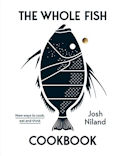 The Whole Fish Cookbook: New Ways to Cook, Eat and Think, by Josh Niland
The Whole Fish Cookbook: New Ways to Cook, Eat and Think, by Josh Niland
Brilliant. If you don’t follow Josh Niland, the pioneer and easily the world’s biggest proponent of “nose to tail” fish eating, on Instagram, you should. We’ve all seen photos and videos of amazing things that butchers and chefs do with other meats, and he brings the same level of care and intensity to creatures of the sea. And this book is a compilation and explication of many of things that to date, we’d only seen in photos and videos.
The recipes are stunning. The one thing is, this is definitely a cookbook written for chefs. That’s not to say that non-chefs won’t find it fascinating, but unless you’re well steeped in a lot of professional kitchen procedures and lingo, there are a lot of things that may leave you wondering “why?” or even “what?” He has a tendency to approach many of the directions in the recipes the way a chef might when talking to his crew, with a “do this, then that…” using terms that a line cook would immediately interpret the how to, but the average home cook might be left puzzled.
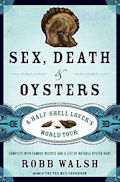 Sex, Death and Oysters: A Half-Shell Lover’s World Tour, by Robb Walsh
Sex, Death and Oysters: A Half-Shell Lover’s World Tour, by Robb Walsh
Oysters on the half shell are one of my favorite treats. Some of you may remember when my friend David and I spent National Oyster Day on a Manhattan binge of the molluscs. Now, I don’t know Walsh’s writing, but apparently he’s somewhat of a big deal on the Houston food scene. And his writing is well crafted and flows smoothly. I learned more about oysters in this book than I have in decades of food world experience. And for that, it’s worth a read.
But, the book suffers from two things, though in some ways I think they stem from the same root. It’s almost as if each chapter was written as a separate essay. In each chapter, he sets out to find the best oysters in the town or area where he’s arrived. He seems unable to articulate what it is he’s looking for in order to determine that the oysters are the best, but in each instance, he finds “the best”, the “awesome”, though again, with no explanation of why it is so. The second thing is that this pattern repeats itself, chapter after chapter, which is why it feels as if they were written as standalone pieces. What’s missing is editing them together as a whole narrative that flows from one to the next, rather than a rinse and repeat approach.
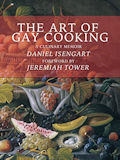 The Art of Gay Cooking: A Culinary Memoir, by Daniel Isengart
The Art of Gay Cooking: A Culinary Memoir, by Daniel Isengart
This book came to my attention when Jeremiah Tower, who wrote the forward to it, posted about it. Now, I wasn’t at all sure what defined “gay cooking”, and by the end of the book I was no more enlightened. As best I could and can tell, the author more or less defines it as any cooking done by someone who is gay. How that makes it different from any other cooking, I couldn’t, and he apparently couldn’t, say. Having worked in the industry for many years, one of the things that those of us who are members of the LGBTQIA+ (did I miss any letters for the current iteration?) community have pushed for is the recognition that there IS NO difference. I spent months at an internship in my early days hearing “vegetables in the kitchen, fruits in the dining room” from the head chef.
Ostensibly, the book is a witty reinterpretation of the Alice B. Toklas Cookbook. I don’t know why it needed reinterpretation, and let’s say that the author’s self-assessment of his wit is vastly overblown. Mostly he came across as a caricature of a self-absorbed kitchen diva, and he’s not shy about touting his own talents.
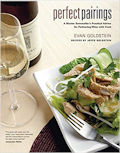 Perfect Pairings: A Master Sommelier’s Practical Advice for Partnering Wine with Food, by Evan Goldstein
Perfect Pairings: A Master Sommelier’s Practical Advice for Partnering Wine with Food, by Evan Goldstein
Upfront, Evan is a longtime friend and one of my favorite people in the wine business, and there’s no way for me to be completely objective about his books. And for those of you who are in woke mode about members of the Court of Master Sommeliers (totally understandable, given what’s happened), let me just say that he’s one of the good guys in the story. When it comes to teaching people about the basics of wine, Evan is one of the best I’ve encountered. He’s smart, funny, and likable, and he puts people at ease, whether they be beginners or pros.
His approach in this book it to take some of the better known grape varieties and wine styles and introduce readers to them, and talk about what makes them work with different types of food. It’s not in-depth, nor is it comprehensive, it’s not intended to be. It’s more a guide for those who want some tried and true advice, and enough information to not feel lost at dinner, be it at home or a restaurant. If you want something more in-depth and that strays from the basics, turn to another of his books, Daring Pairings, which does just that. A nice plus to this book is the inclusion of, the pairing of, recipes provided by his mother, well known and respected chef Joyce Goldstein.
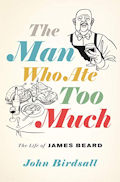 The Man Who Ate Too Much: The Life of James Beard, by John Birdsall
The Man Who Ate Too Much: The Life of James Beard, by John Birdsall
“They say” you should never meet your heroes. For me, growing up as a young gay chef, Beard was one of those. His name, at one time, was as ubiquitous in relation to American food as Julia Child was to French food. I read various of his published works, I’ve even, with co-workers, cooked a couple of different dinners at The Beard House. I met him once in passing.
But “meeting him” in the pages of Birdsall’s book opened up a whole side of him that I had no idea of. Sure, I knew he was gay, and obviously he was overweight. But the degree of shame that he felt for both of those things, and how much angst that leant to his life and his ability to maintain friendships and relationships, was revelatory. The author doesn’t shirk from baring Beard’s flaws, and they were numerous, from the way he treated other people to his rampant plagiarism. At times, there’s a bit too much imagination thrown in – although Birdsall had access to numerous documents and letters that hadn’t been combed through before, I’d have my doubts as to whether Beard really put down detailed conversations and thoughts he had with and about people to the degree presented. But those things make the book flow, and while it’s an inordinately long book, they make it eminently readable.
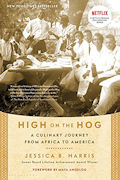 High on the Hog: A Culinary Journey from Africa to America, by Jessica B. Harris
High on the Hog: A Culinary Journey from Africa to America, by Jessica B. Harris
What a fascinating subject. Professor Harris delves deeply into African diaspora cuisine in America. She traces it not just from roots in Africa, but how it developed, and the influences it incorporated, as it shifted regionally in the U.S. and Europe. She includes personal anecdotes not just of her own, but of the people she met during her exhaustive exploration.
Now, noted, Harris is a professor, and while the book seems to be intended for a general reading audience, it does come across a tad… professorial. At times it gets a touch dry, at times it gets a touch condescending, and it does seem to go on just a bit longer than necessary. But I think that comes with the territory, and the information and stories contained in the book more than make up for the style.
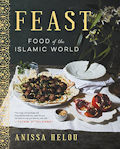 Feast: Food of the Islamic World, by Anissa Helou
Feast: Food of the Islamic World, by Anissa Helou
I almost just want to limit this review to “Wow! Comprehensive and endlessly fascinating!”
Seriously, this is one of the best books I’ve read covering the world of Islamic cuisine. In fact, in a sense, it’s the only book I’ve read cover that world. Because note that it’s not phrased as Middle Eastern cuisine, nor Arab cuisine, but Islamic, and that covers the globe, with huge differences between the foods of the Middle East and those of, say, Southeast Asia, or the United States, or Europe, or… wherever. There may be some common roots, and in some cases, there may not be, but Helou unstintingly tackles a subject this vast with aplomb, and thoroughly enjoyable writing, along with beautiful photos, and easy to follow traditional recipes.
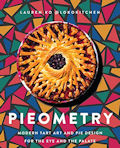 Pieometry: Modern Tart Art and Pie Design for the Eye and the Palate, by Lauren Ko
Pieometry: Modern Tart Art and Pie Design for the Eye and the Palate, by Lauren Ko
Another one that if you don’t follow the author’s Instagram feed, you just don’t know what you’re missing. Ko is something of an IG sensation, with her amazing photos of intricately designed pies. You almost don’t care what they’re made of, they’re works of art.
That said, this book not only gives you the story behind her rise to social media fame, but the details of how to do what she does. It covers not only the design elements, with all the intricate steps for how to produce photo-worthy results, but also the recipes for making sure that they taste as good as they look. I’m not much of a pie baker, but the book makes me want to start. And it would look great on your coffee table….
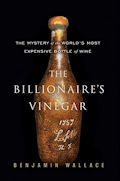 The Billionaire’s Vinegar: The Mystery of the World’s Most Expensive Bottle of Wine, by Benjamin Wallace
The Billionaire’s Vinegar: The Mystery of the World’s Most Expensive Bottle of Wine, by Benjamin Wallace
Most of us have seen news articles, whether we read them or not, about the two big scandals of wine fraud in the last couple of decades. One was the Rudy Kurniawan, the infamous conman who made practically a production line out of producing fake bottles of supposedly auction-worthy wines and conned some of the best in the business. And the other, Hardy Rodenstock, who went for a much more limited quantity, but aimed for a luxury market that produced sales of some of the most expensive wine ever sold.
This is the story of the latter con, following from when it actually happened, to when buyers began to be suspicious, to the investigations and revelations of how he pulled it off. It’s a completely engaging detective story that were you not to go into it knowing that it actually happened, would seem to be a nearly unbelievable mystery novel. Sometimes, as they say, truth is stranger than fiction.
And that’s more than enough to keep you all going. This doesn’t include all the food and wine adjacent books, like having read the entire Monsieur Pamplemousse gourmet detective series, or some of the “cozy” food mysteries that I read over the last year or so, and more. Me, I’m going back to my reading stack. There’s always more out there!
